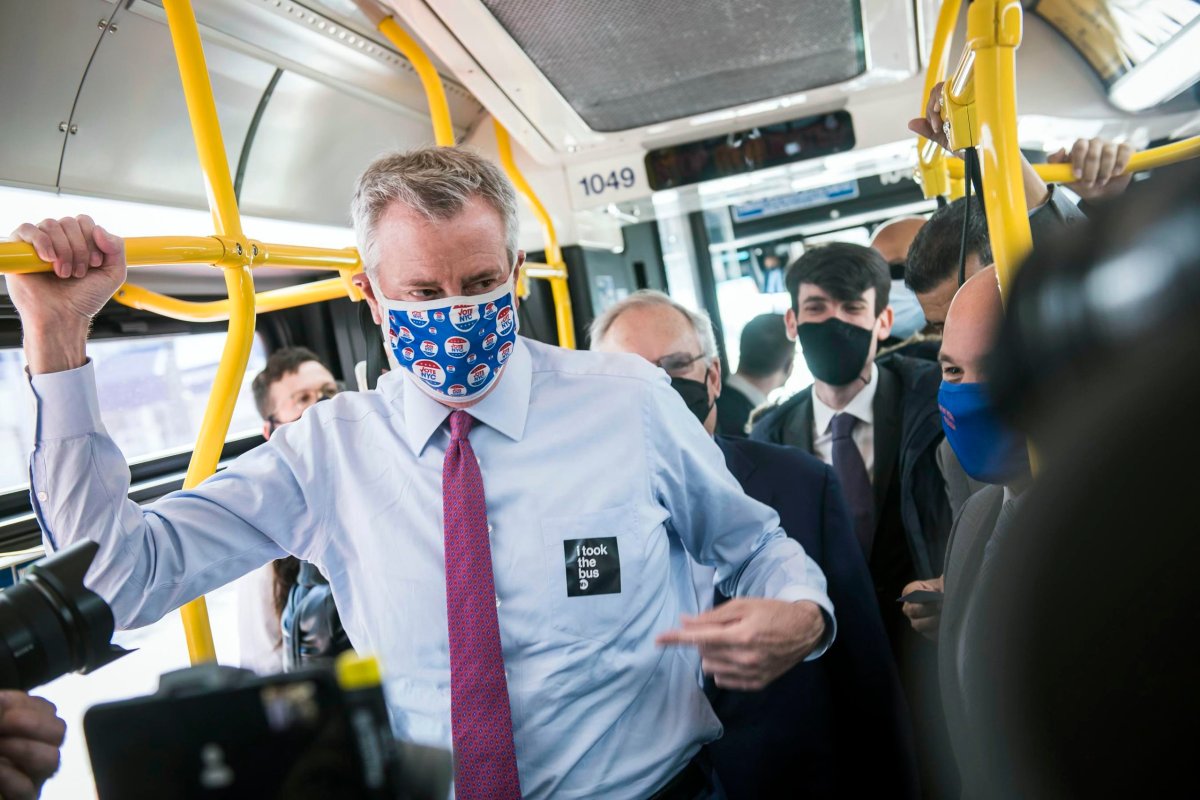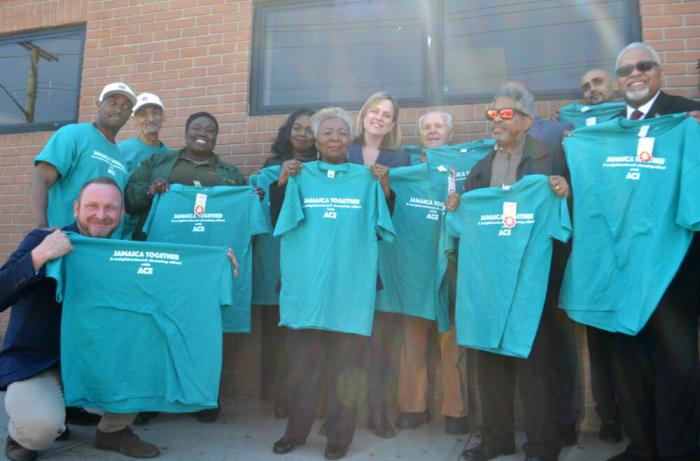Hours after he rode a bus in Washington Heights for a brief photo op, during which he declared, “This is what equity looks like,” Mayor Bill de Blasio was challenged by a caller from Jamaica during his weekly Ask the Mayor segment on the Brian Lehrer Show.
“When the privileged are able to work from home while low-income riders and people of color rely on unreliable public transportation to get to work, New Yorkers are experiencing a tale of two cities,” the caller said. “Nearly half of all essential workers fighting this pandemic are bus riders. And 75 percent of those riders across the city are people of color. We deserve a city that prioritizes our time and prioritizes our buses on our commute.”
For months, Councilman I. Daneek Miller has been urging the city to improve transit in southeast Queens, primarily along the Merrick Boulevard Bus Way, where the implementation has been suspect. Late last month, Miller introduced legislation requiring the Department of Transportation to install signage and disclose publicly the days and hours when bus lanes are in effect.
Under the legislation, the agency would need to post a sign on each block of any street subject to bus lane restrictions indicating the hours and days when restrictions are in effect for that block. The legislation would also require DOT to publish and maintain its website the hours and days when bus lane restrictions are in effect for each affected street in the city.
“Transit improvements are welcome in southeast Queens, but they must be implemented properly and with the same level of care and consideration for the surrounding community as anywhere else in the city,” Miller said.
Miller introduced his bill after repeated calls for the DOT to be more transparent on when bus lanes are being enforced and to provide adequate signage. Members of the southeast Queens community have voiced their concerns over the “poor implementation” of the Merrick Boulevard bus lane project, saying it has yet to receive the same infrastructure as in other parts of the city.
Without the concrete build-outs of sidewalk additions, red paint and robust signage that are typical for such projects, local residents are left “confused and unsure” of the bus lane’s regulations, Miller explained. At the Merrick Boulevard location, DOT has implemented 24/7 enforcement, yet has not posted any authorization signs notifying the public, a sharp contrast from the nearby Jamaica Avenue bus lane which has clear signage on the rush-hour only, weekday enforcement along that corridor.
“Bus lane enforcement is necessary for both commuters and drivers,” Miller said. “But it also requires proper notification to succeed. Otherwise, projects aimed at improving bus times and expanding service is instead interpreted as punitive and disingenuous by the community.”
In concluding his response to the caller from Jamaica, de Blasio said that the bus lanes are a work in progress.
“We obviously are moving busways and new bus lanes all over the city. Last year was a record year, even amidst the pandemic for expanding bus lane capacity,” de Blasio said. “We’re going to be doing a lot more this year and we’ll have announcements in the coming weeks as part of the budget process. So, I think better than words, actions that we’ve proven, I’ve proven how much I’m committed to this. And you’re about to see a substantial amount more.”































